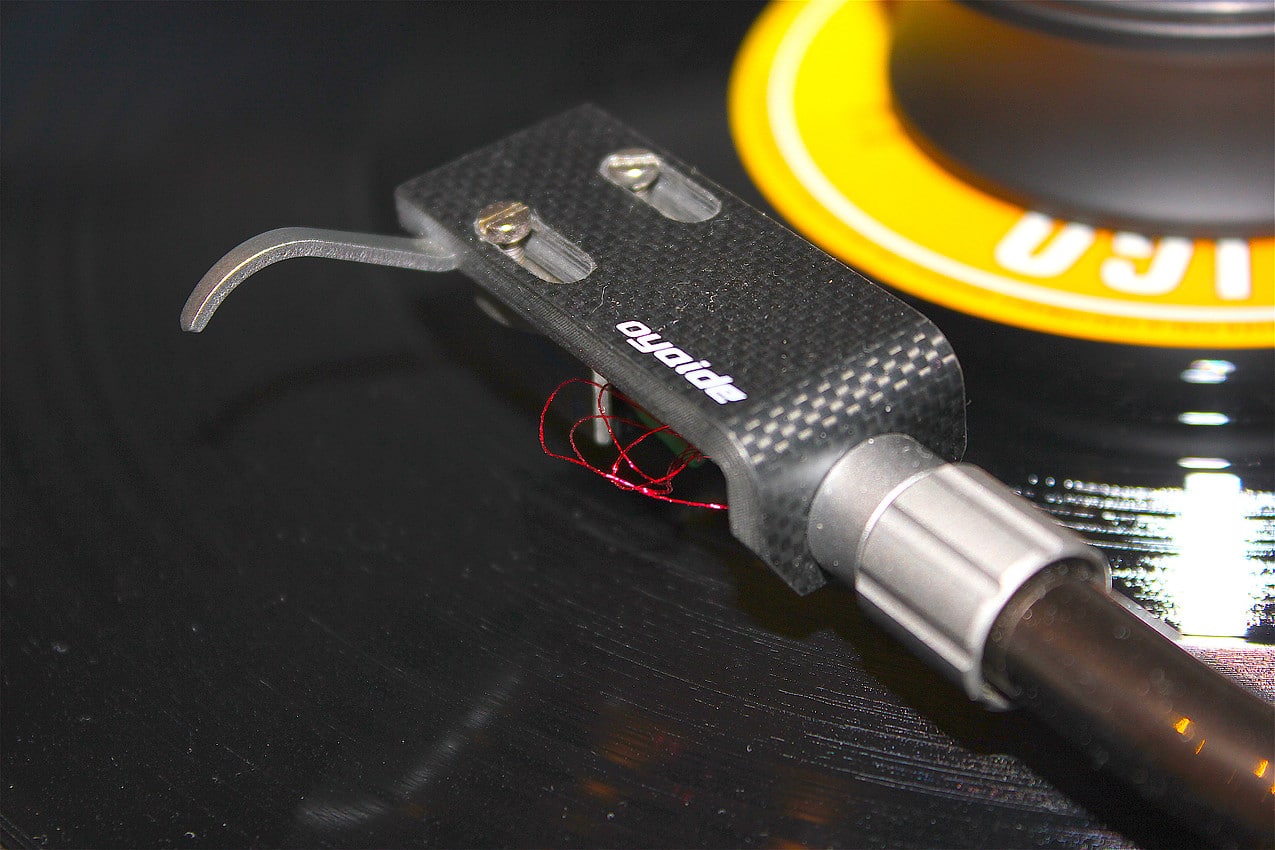The Article
Arm In Arm: Swamped with carts?
23rd February 2016
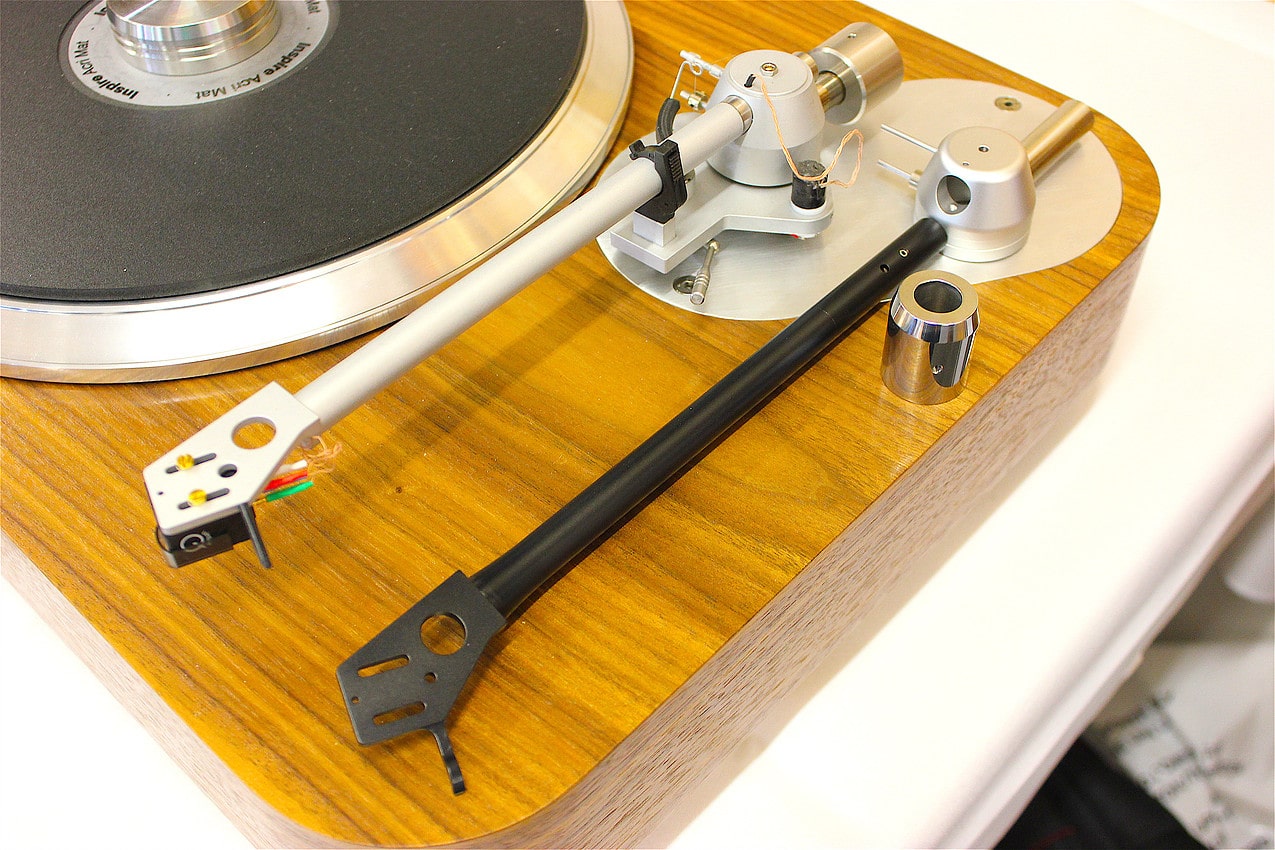
What happens if you have too many cartridges and you want to play them all at once? Paul Rigby may have the answer
I blame my mum. In my interest in the golden era of Hollywood, that is. I’m talking Gable, Stewart, Wayne, Turner, Stanwyck, Rogers. The studio system fell apart in 1963 and I have a healthy suspicion of any film published after 1970. Getting to know the actors through biographies and their work, the directors, producers and the mechanics of the whole thing, it’s no real surprise that, as an amateur film historian, I began to trace the whole thing back to the silent era…and then beyond. Beyond to vaudeville. Which then triggered my interest in British music hall. Both circuits featured superstars and an entire entertainment ecosystem that flared brightly and disappeared almost overnight. There was no internet, TV or video in those days, of course so, apart from the odd photo, the only proof of the performances from many of these lost ‘greats’ is the 78 or even the Edison cylinder (often then retread onto 78s later).
So here I am. An audiophile journalist with a storming great reference system. Now looking to start a collection of 78s. When I don’t even have the room to store the thousands of vinyl and CDs I have (I won’t even go into the 10+ 4TB external hard discs that hold digital fare).
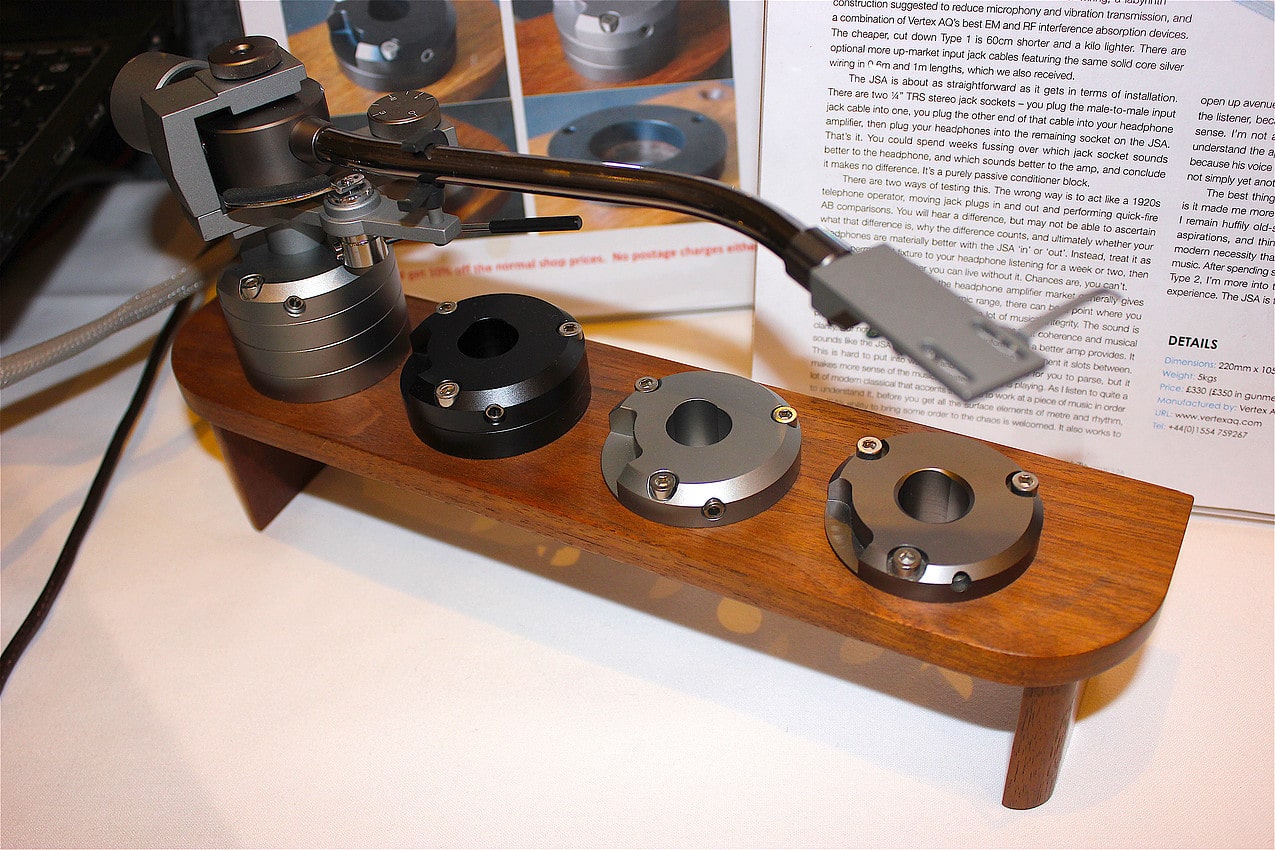
As an admitted audiophile, I am cautious of the original players of the time. Yes, I know that they offer the original ‘feel’ and ‘atmosphere’ of the day. I know that they are supposed to be more ‘musical’ and ‘exciting’. Trouble is, though, I’m a sucker for information and I want as much information from these fragile 78 discs as I can draw. Hence, I will probably look towards a specialist cartridge on a decent, modern, 78rpm deck. As I’ve recently fallen in love with all things Miyajima, I’ll probably be looking at the Zero 78, although I’ve yet to test it: watch this space on that score.
That’s that format sorted (probably), I’ve already got myself a stereo cartridge, of course, for the gamut of vinyl stored around the house. I’m also in possession of a mono cartridge from Miyajima, the 1mil version for mono discs pressed (vaguely) before 1965-ish. I’ve tested but have yet to actually buy another mono cartridge that will handle mono discs that were pressed after 1965-ish. Of course, that includes any new vinyl reissue rarity marketed as a mono pressing. So that’s what, four cartridges? I have yet to look seriously at different shaped stylii for stereo carts but, look, I don’t want to get silly about this. Four carts in the locker is silly enough for now.
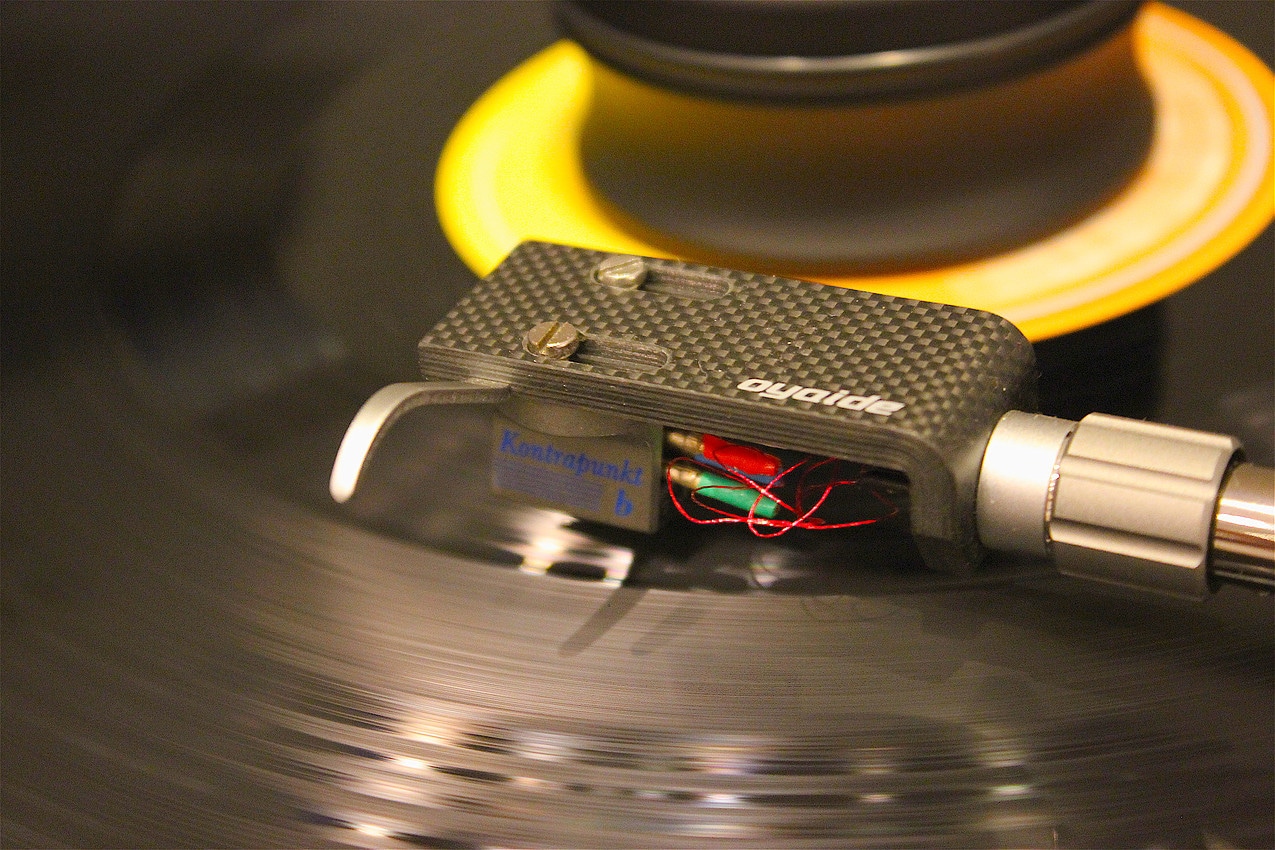
Trouble is, although I have a host of turntables knocking about my domain (from the likes of Rega, Wilson-Benesch, EAT, etc.), I have two ‘top of the line’ models that represent my listening sources for ‘me time’. Both sit next to each other, placed on wall shelves. They are the Avid Acutus (with an SME IV plus Koetsu Black…or Miyajima Takumi) and the Origin Live Sovereign with a 12” Enterprise arm plus A.N.Other cart. the problem with both decks is that they can’t handle more than one arm at a time. I’ve asked Origin and have received a sad shake of the head. Conrad Mas at Avid could make one up (he never says no, that man could re-engineer the Acutus chassis to resemble the third scene from Hamlet…with an SME IV attached – if you asked him nicely and gave him enough money) but it would be a hassle, let’s say. It’s not a plug-and-play thing.
So, I’m limited to two spaces to receive my eventual four-cart conscription. As it stands, I will have to spend my time installing a cartridge every time I want to play a different record format. I know, life is just too short.
I have two options, though and both involve new arms. I recently completed the biggest and most elaborate National Audio Show show report that has ever been placed to print or screen. Around 35 ‘live’ to microphone interviews, placed on my site as sound files with umpteen images to accompany each one. Begone was the tired and tedious: ‘pic’ and and textual ‘poke’, that you normally see. All of those reports remain on my site now and, if you go a-hunting, you will see two reports, in particular, which triggered much rumination.
The first was with Hugo Caas from Ammonite Acoustics (www.ammonite-acoustics.co.uk) who not only handles Jelco arms but has a rather nifty gizmo that improves its performance. He has developed an improved mounting collar for the tonearm itself, “The original collar that Jelco supply,” said Caas, “is beautifully machine but it, actually, rubbish.” Which is a pretty damning statement, I’m sure you’ll agree. “The problem with it, is the slight cut-out, opposite the grub-screw. In theory, that should hold the arm vertical. In fact, it’s so shallow that the arm just falls into it.” Caas provided a quick demo of the ‘Jelco Effect’ there and then which was an obvious issue with azimuth, “My version is longer and has a much more sharply defined cut-out. Dead easy to adjust.” The collar is only £41. Caas has also introduced a space ring to add height for decks with thick platters. The Dr Feickert Woodpecker is a typical example of that, Garrards are another. The rings are just £19.

The Jelco is a great arm for the money costing just £379 for the 9” with a 12” at around £460. It has the added benefit of changeable headshells! “The Jelco headshells are perfectly functional. They come with an azimuth adjustment too. That said, the Japanese Oyaide headshells are significantly better.” You can even pick them up from Amazon for around £230. The UK cable outfit, Black Rhodium, distribute them.
The other option is a more expensive one but, arguably, more audiophile in nature and comes in the form of a new unipivot from Audio Origami. Again, my interview with the garrulous Johnnie Nilsen who is Audio Origami is present and correct on my site but, after the show, I asked him about the whole headshell argument. He responded with, “The ease of swapping cartridges is the main attraction of a detachable headshell and, in some cases, the extra mass from the headshell adaptor is a extra benefit for low compliance moving coil cartridges. On paper, the fixed type arm tubes should get the maximum information from the record grooves, a no compromise design that offers the best sonic performance but takes a little longer to swap cartridges. The compromise in mechanical rigidity seems, on paper, the main draw back from the detachable headshells and normally there is a rubber washer between the headshell and the connector, that can be squeezed tight but the headshell lock…it’s never solid and tiny amounts of information from the groove could be lost if the tonearm is not holding the cartridge firm.”
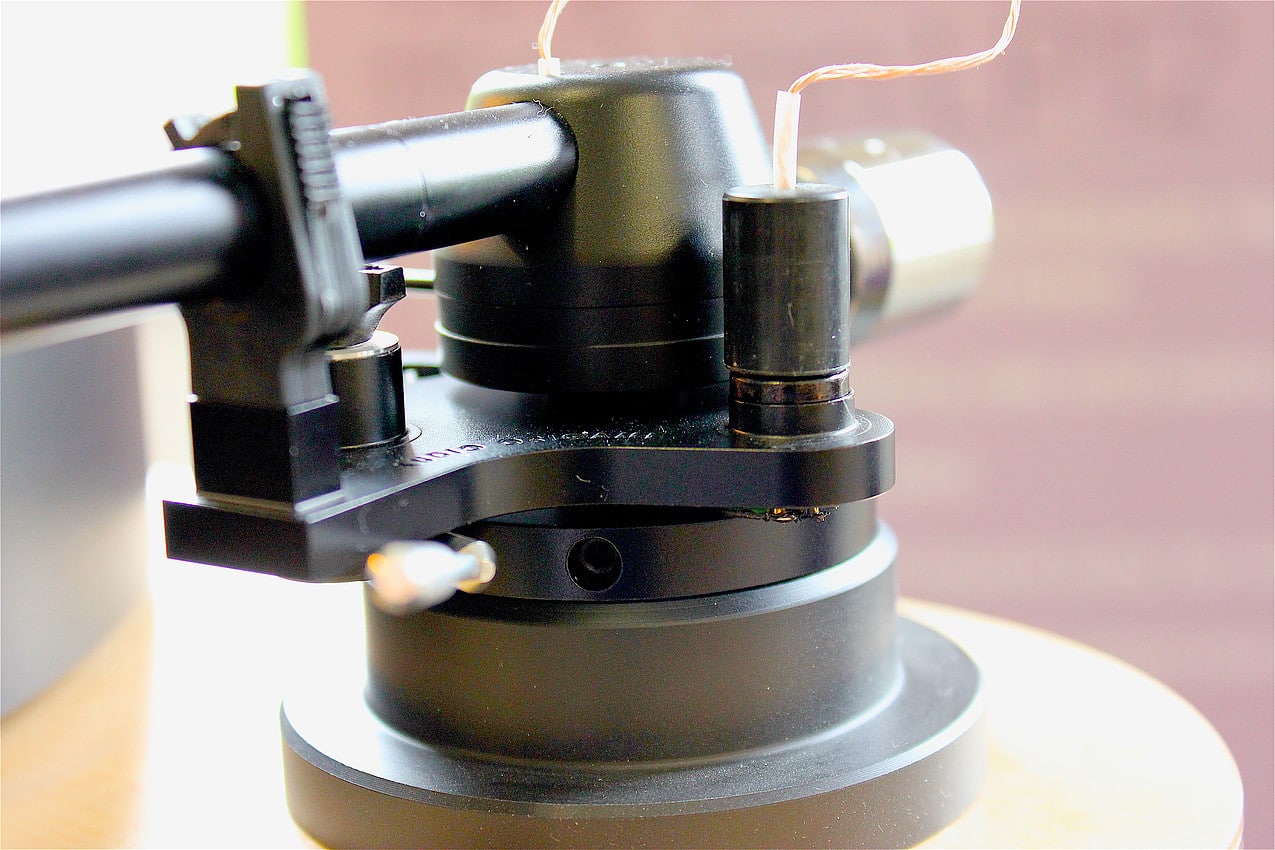
That confirmed my worries. Of course, when you’re looking at a Jelco arm at such a reasonable price, then the odd compromise here and there should be expected. Nevertheless, I worried. Nilsen also added, “Again on paper, another drawback is the electrical connector contacts. It’s a compromise situation that relies on the contact pressure between the connections to make a good circuit. The contact pressure is applied by four tiny springs and its important that the connections are kept clean. The tiny voltages and current used by the tonearm are very small and any extra resistance between the headshell connectors must be a bad thing.”
Nilsen was adamant that the headshell removable arms are wholly versatile and he acknowledged that there are many very satisfied customers out there but for top quality sound? “I would recommend a fixed headshell design that will give best results.”
You just knew that Nilsen would be able to supply such a beast didn’t you? Well, then again, I’m not sure that he intended to or was going to. I wonder – and dearest Johnnie can correct me here if I’m wrong – if I wasn’t the one to give him the idea. Hey, if I’m not going to inflate my ego, who is?
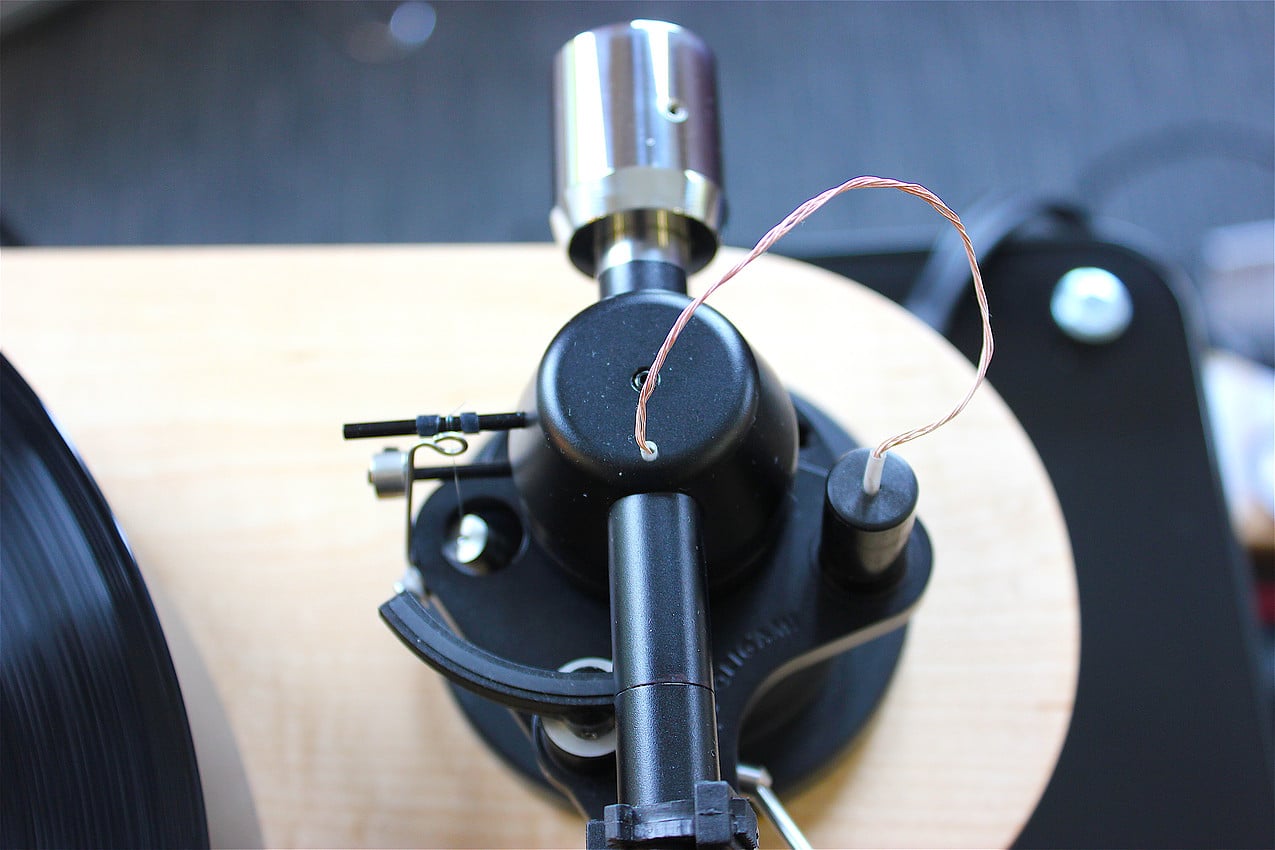
At the NAS show in Whittlebury, walking to the Audio Origami area of the room (he was sharing it with Inspire), Nilsen talked me through the construction of his new arm and, bingo, there it was: swappable arm tubes or, as Nilsen has it, ‘wands’. Once you have installed the new unipivot arm it is very easy to remove the arm tube. It goes something like this:
1: remove the tube’s plug that sits at the end of that wire you can see next to the arm housing in the accompanying image. This should take all of three seconds.
2: lift the arm tube from the housing – another, ooo, second?
3: walk away with it – time span is in your hands on this one.
What is to stop you, I mused to Nilsen, having, oh I don’t know, four arm tubes/wands shall we say? Each wand featuring a permanently installed cartridge. Then, when you want to swap over the cartridge you, well, don’t. Instead, you swap over the entire tube or wand.
“Money?” he replied. Well, yes, there is that. The new Audio Origami unipivot arm will cost around £1,500 and the wands will cost around £1,000 each. For me? I’d need to find £5,500 to do the dirty deed. Or, if I went down the Jelco route plus Oyaide headshells, around £1,400 all in. Hmmm. Decisions.
Your input and advice on this would be useful and I’m wondering if I really do need a car…or those computers…or the wife.
But to be able to just whisk off a headshell or a complete arm tube when changing record formats and the thought that it would take mere seconds to perform that change over is mighty tempting, I can tell you. Then again, if I started a serious 78 collection, I would need far more room. Again, do I really need my son? I mean, he eats a lot and it would help the bills. Then there’d be no reason for his bed and imagine the shelving that space would hold? Decisions.

